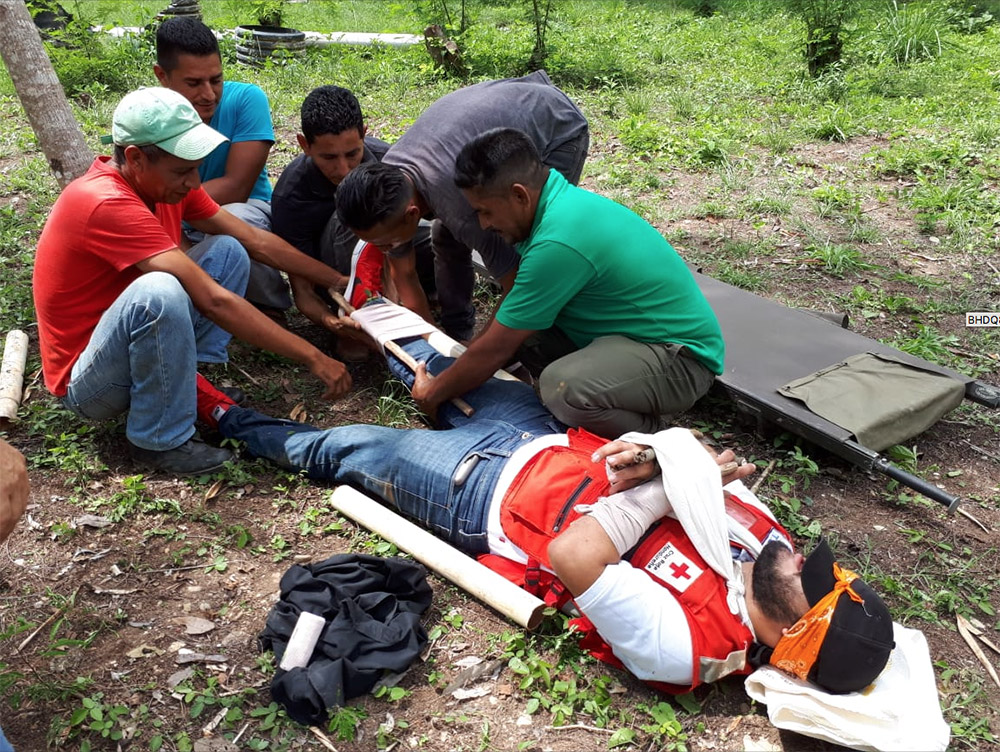Actions in mining go beyond simply controlling and preventing the risks inherent to this activity.
Occupational Health and Safety actions in mining go beyond simply controlling and preventing the risks inherent to this activity. This is a comprehensive strategy that seeks not only to safeguard workers’ health, but also to instill a safety culture rooted in active awareness of the importance of safety protocols.
In the complex environment of mining operations, the physical, psychological and emotional well-being of workers is a top priority. The nature of daily production processes involves constant exposure to risks, injuries and dangerous situations, often exceeding the standards of other industries.
In this context, the active participation of workers is essential in the identification and evaluation of potential hazards. Empowering each team member with the necessary tools to recognize and mitigate risks not only strengthens workplace safety, but also promotes a sense of shared responsibility and leadership in each area of operations.
Training and Education
We support in structuring training programs and the development of the different issues related to occupational health and safety, promoting the development of safe skills and behaviors for miners in order to prevent work-related accidents and illnesses.
Safety net & build wealth
- Safety inspections
- Hygiene conditions in mining,
- Have human and technical capabilities
- Identification of needs
- Support investigation
- Support in the definition and implementation of training

Mining Safety Measures to Consider
To ensure a safer working environment, mining companies must implement a range of safety measures that cover every aspect of their operations. Key considerations include:
1 Comprehensive Training Programs
Adequate training plays a vital role in enabling miners to comprehend the potential risks that may be associated with their tasks and the safety protocols that are put in place to mitigate them. Regular training sessions should cover a broad range of topics, including but not limited to, emergency response procedures, equipment operation, and hazard recognition. Such training programs should be aimed at equipping miners with the requisite knowledge and skills to identify potential hazards and respond appropriately in the event of an emergency. By providing regular training programs, employers can ensure that miners are well-informed and adequately prepared to handle the challenges of their job tasks in a safe and efficient manner.
2 Advanced Technology Implementation
The mining industry has increasingly embraced technology to enhance safety in the workplace. Automation and remote-controlled machinery, for instance, have emerged as key solutions to minimise workers’ exposure to hazardous environments. Additionally, drones and sensors have proven to be effective tools for providing real-time data on conditions within mines. With the ability to monitor and analyse the environment, these technologies offer a promising way forward for the industry in its quest for safer working conditions.
3 Personal Protective Equipment (PPE)
Using appropriate PPE is essential in minimising the risk of injuries. PPE, such as helmets, gloves, respiratory protection, and reflective clothing, should be inspected and replaced regularly to ensure that workers are adequately safeguarded. Adhering to such practices can improve worker safety and reduce the likelihood of mining fatalities.
4 Emergency Response Planning
Mining companies are expected to maintain robust emergency response plans that take into account possible hazards such as fires, explosions, and cave-ins. These plans are essential for ensuring the safety of workers and the continuity of operations. Regular drills and simulations can help to prepare workers for unforeseen events, allowing them to react quickly and efficiently. By adhering to industry best practices and continuously improving emergency response plans, mining companies can reduce the likelihood of accidents and minimise their impact in the event of an incident.
5 Health Monitoring Programs
Maintaining a continuous surveillance of employees’ physical well-being, particularly their exposure to hazardous substances, is a vital component of ensuring early detection of potential health issues. In order to achieve a comprehensive health monitoring program, regular health check-ups, lung function tests, and screenings for occupational diseases must be conducted. These procedures serve as integral components in identifying potential health concerns among employees, thereby allowing for timely intervention and prevention of adverse health outcomes.
6 Community Engagement
It is advisable for mining companies to engage in active communication with local communities to address concerns related to safety and environmental impact. Through open dialogue, a climate of trust and cooperation is fostered, which in turn leads to shared responsibility for maintaining a safe and sustainable mining operation. This approach can be instrumental in creating a mutually beneficial relationship between mining companies and the communities in which they operate, and can also serve as a means of promoting sustainable development.
